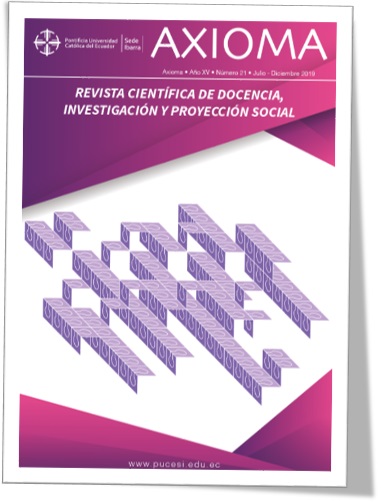Testing microalgae solutions (scenedesmus sp) as a natural biostimulant in the lettuce hydroponiccultivation (lactuca sativa)
Main Article Content
Abstract
In order to make a first contribution in the use of nutrients coming from unicellular algae, a test was realized, its main purpose consisted on evaluate the nutritional contribution of live unicellular algae. (Scenedesmus sp) in a nutritive solution that is commonly used in hydroponic. Three doses of microalgae solution were evaluated as a natural bio stimulant in the lettuce production. (Lactuca sativa): in a low concentration of algae (40 x 104 cel. ml-1); medium concentration (80 x 104 cel. ml-1); and high (120 x 104 cél. ml-1); the witness was a nutritive solution without microalgae addition. There were used microalgae from the laboratory of Agricultural and Environmental Sciences School where the microalgae were produced to add them to the hydroponic production system later. A completely randomized block design was used in four treatments and three repetitions. The blocks were placed perpendicularly to the luminosity considered as a non-controllable factor. The hydroponic nutritive solution was evaluated daily, the pH was constant 6 to 7,3 and the electrical conductivity was 1,7 a dSm-1. At the end of the development cycle, the roots and leaves were weight. The variance analysis detected significant differences for the treatments (p<0.05). At the end of the essay, the aerial weight average per plant was 34.3 g. for the witness (without microalgae solution addition), while for the high microalgae solution (120 x 104 cel ml-1) was 46.32 g. Therefore, the use of live microalgae solutions during the hydroponic lettuce development cycle provokes a lettuce production increase without affecting the hydroponic solution or the plant.
Downloads
Article Details
Con la finalidad de contar con un tipo de licencia más abierta en el espectro que ofrece Creative Commons, a partir de diciembre de 2022 desde el número 27, AXIOMA asume la Licencia Creative Commons 4.0 de Reconocimiento-NoComercial-CompartirIgual 4.0(CC BY-NC-SA 4.0). Tanto el sitio web como los artículos en sus diferentes formatos, reflejan esta información.
![]()
Hasta el mes de noviembre de 2022 con el número 26, la revista AXIOMA asumió una Licencia Creative Commons Atribución-NoComercial-SinDerivadas 4.0 Internacional (CC BY-NC-ND 4.0). Los artículos contenidos en cada número hasta el 26, cuentan con esta licencia y su descripción se conserva en el portal de nuestra revista.
Atribución-NoComercial-SinDerivadas
CC BY-NC-ND
AXIOMA- Revista Científica de Investigación, Docencia y Proyección Social
References
Brown P and Saa S (2015) Biostimulants in agriculture. Front. Plant Sci. 6:671. doi: 10.3389/fpls.2015.00671
Beltrano, J. (2015). Cultivo en hidroponía. Universidad Nacional de La Plata: http://sedici.unlp.edu.ar/bitstream/handle/10915/46752/Documento_completo.pdf?sequence=1
Díaz, J., et al (2016). The effect of foliar applications of a bio-stimulant derived from algae extract on the physiological behavior of lulo seedlings (Solanum quitoense cv. Septentrionale). Obtenido de: https://scielo.conicyt.cl/scielo.php?script=sci_arttext&pid=S0718-16202016000100003&lang=pt
FAO. (2003). La huerta hidropónica popular Organización de las Nacioanes Unidas para la agricultura y la alimentación. Tercera edición Chile Obtenido de http://www.fao.org/3/a-ah501s.pdf
Gutiérrez, J. (2011). Produccion hidropónica de lechuga con y si recirculación de solución nutritiva. Obtenido de:https://chapingo.mx/horticultura/pdf/tesis/TESISMCH2011120908126441.pdf
Hadid, A. et al (1996). Electrical conductivity effect on growth and mineral composition of lettuce plants in hydroponic system. Acta Horticulturae 434 (434):59-66. DOI: 10.17660/ACTAhORTIC.1996.434.6
Hadid, A. (1996). Electrical conductivity effect on growth and mineral composition of lettuce plants in hydroponic system. Acta Horticulturae.
Hernández, J. (2013). Nutrición mineral en plantas. Obtenido de https://cienciacebas.wordpress.com/2013/09/12/nutricion-mineral-en-plantas-i/
Khan, W. et al (2009). Seaweed extracts as biostimulants of plant growth and development. Plant Growth Regul. , 28:386-399.
Nabti, E., Jha, B. y Hartmann, A. Int. J. Environ. Sci. Technol. (2017) 14: 1119. https://doi.org/10.1007/s13762-016-1202-1
Nedumaran T. (2017) Seaweed: A Fertilizer for Sustainable Agriculture. In: Dhanarajan A. (eds) Sustainable Agriculture towards Food Security. Springer, Singapore
Reyes, C. (2009). Evaluación de híbridos de tomate (Lycopersicon esculentum Mill.) en hidroponía aplicando bioestimulante Jisamar en el Cantón La Libertad. Obtenido de: http://studylib.es/doc/4774759/tesis-de-grado
Quevedo, et al (2007). Crecimiento de Scenedesmus sp en diferentes medios de cultivo para la producción de proteína microalgal. Facultad de Ciencias Químicas. Universidad de Antioquia.
Van Der Boon, J. W. Steenhuizen & Eveliene G. Steingrover (1990) Growth and nitrate concentration of lettuce as affected by total nitrogen and chloride concentration, NH4/N03 ratio and temperature of the recirculating nutrient solution, Journal of Horticultural Science, 65:3, 309-321, DOI: 10.1080/00221589.1990.11516060
Zodape, S. (2011). Foliar application of seaweed sap as bios-timulant for enhancement of yield and quality of tomato (Lycopersicon esculentum Mill.). J. Sci. Ind. Res., 70:215-219.

